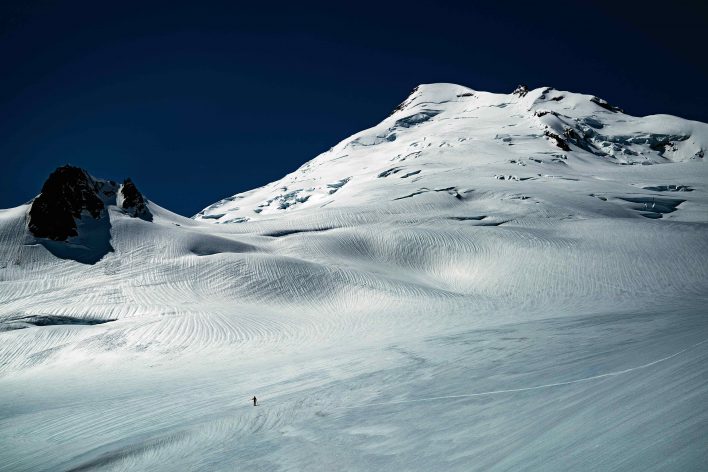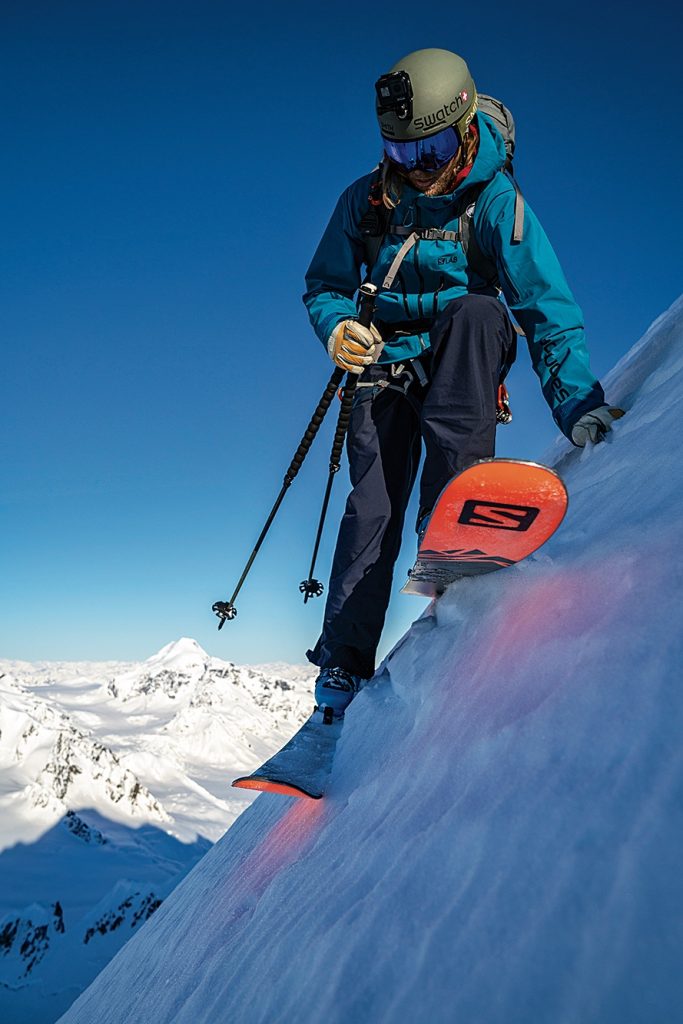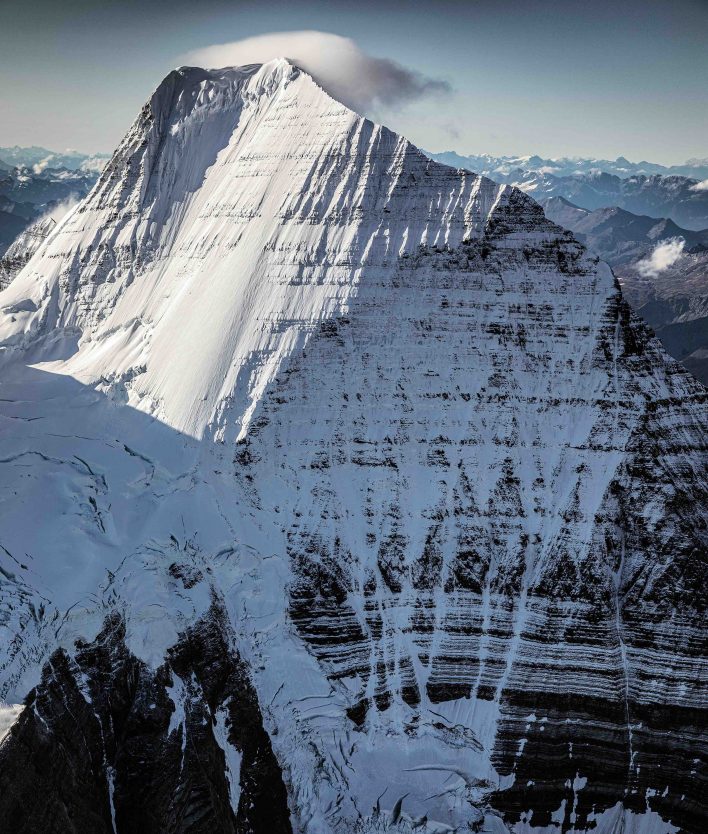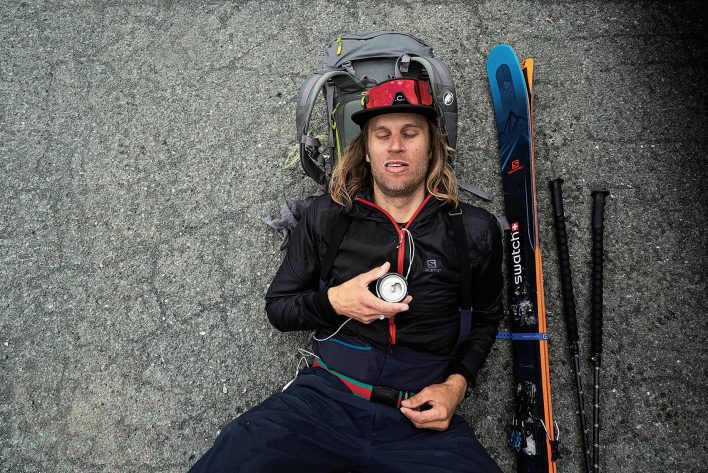
In autumn 2009, Penn Newhard, Chris Davenport and I sat down to finalize the list of lines that would make it into our book, Fifty Classic Ski Descents of North America. We’d been inspired by others who, over the decades, had forged new paths on very big descents and by our own ski mountaineering adventures.
Some of the selections were obvious and included descents like the Landry Line on Colorado’s Pyramid Peak, Mt. Robson’s north face in British Columbia and Denali’s Messner Couloir were a given. Others we had to think carefully about, and, in many cases, we would need to rely on the experiences of others who had more time in specific geographic zones, like the Pacific Northwest, Alaska and Canada’s Coast Range. Davenport and Newhard had skied numerous North American peaks and made descents in Europe, Antarctica and elsewhere. I’d enjoyed adventures in Canada and Alaska’s Wrangell-St. Elias National Park and Preserve, and we all knew Colorado well. That meant we had an initial list of about 35 to 40 descents in mind. But who were we to decide the 50?

There were literally hundreds of possibilities. The geography was simply too big and the possible descents too numerous, so we reached out to our friends and fellow ski explorers to help narrow the list. Many graciously wrote about their favorites, including many first descents. Loren Glick gave us firsthand descriptions of University Peak and Mt. St. Elias. Troy Jungen and Ptor Spricenieks described the historic first descent of Robson as a cathartic, sacred experience of deep respect for the mountain. Chic Scott shared the joy of one of the great traverses in Canada, and Jimmy Chin and Greg Hill gave us wonderful insights into some of their favorites. Beyond the firsthand accounts, we needed striking images, so we included photos from 55 of the best photographers we could find.
After 11 intensive months, we had a book. But how would it be received and whom would it inspire? We wondered who and when someone would attempt all 50 descents—a daunting and arduous project.

It wasn’t long before some were inspired to begin their quests. A few years ago, word of Noah Howell silently skiing the 50 began to filter back to us. And, more recently, Cody Townsend launched his efforts with humor and striking documentation by his ski partner, Bjarne Salén.
Watching the two skiers has inspired awe in the book’s three authors. Howell and Townsend’s style and dauntless enthusiasm has set a high bar. Howell, in his silent ninja style, has brought humor and humility to his project. He has been quietly and efficiently getting it done under the radar—just as he likes it. Townsend, along with many colorful companions who hold vast local knowledge, has kept me howling with laughter with each episode of The Fifty.

Townsend has exposed ski mountaineering for what it is at its core: suffering with your comrades on the way to a memorable day in the mountains, hopefully along with some good snow. Just ask his wife, Elyse Saugstad, about Horstmann Peak’s Sickle Couloir in Idaho’s Sawtooth Mountains—there’s the proof that women are tougher and more resilient than men. In some ways, Salén and Adam Clark are the unsung heroes of these two projects, climbing and skiing each descent while having the added stress and challenge of documenting it all. In my mind, it adds another layer of risk and complexity.

Both Howell and Townsend have completed many of the difficult descents—Pyramid Peak’s Landry Line, Denali’s Messner Couloir and Mt. Shuksan’s NW Couloir. Still to come are some daunting challenges: Mt. St. Elias, University Peak and Mt. Robson. These are descents that keep you up at night, and skiing just one during a lifetime would be enough for most people. Other descents are more straightforward, almost casual, like Buffalo Mountain’s Silver Couloir, Youngs Peak’s Seven Steps to Paradise or Mt. Hood’s Newton-Clark Headwall. In Canada, the lines turn into bigger, multiday projects with substantial risk, where timing is critical for safety and finding descents in good condition.
I would offer advice to Howell and Townsend, but after watching and digesting both of their processes and approaches, I’m sure I would be the one learning from how they solve the puzzles of each descent. I’ve been inspired by watching their pursuits and how they’ve set a new standard for style, humor and respect for these mountains, and I wish them luck and safe travels.

Having missed his opportunity to be raised by wolves, Art Burrows has made up for it by wandering the wilderness. He is one of the three authors of Fifty Classic Ski Descents of North America.
This story was originally published in November 2020 in Backcountry Magazine No. 136. To read more, pick up a copy at BackcountryMagazine.com/136 or subscribe.










Related posts: